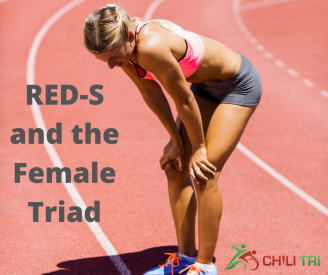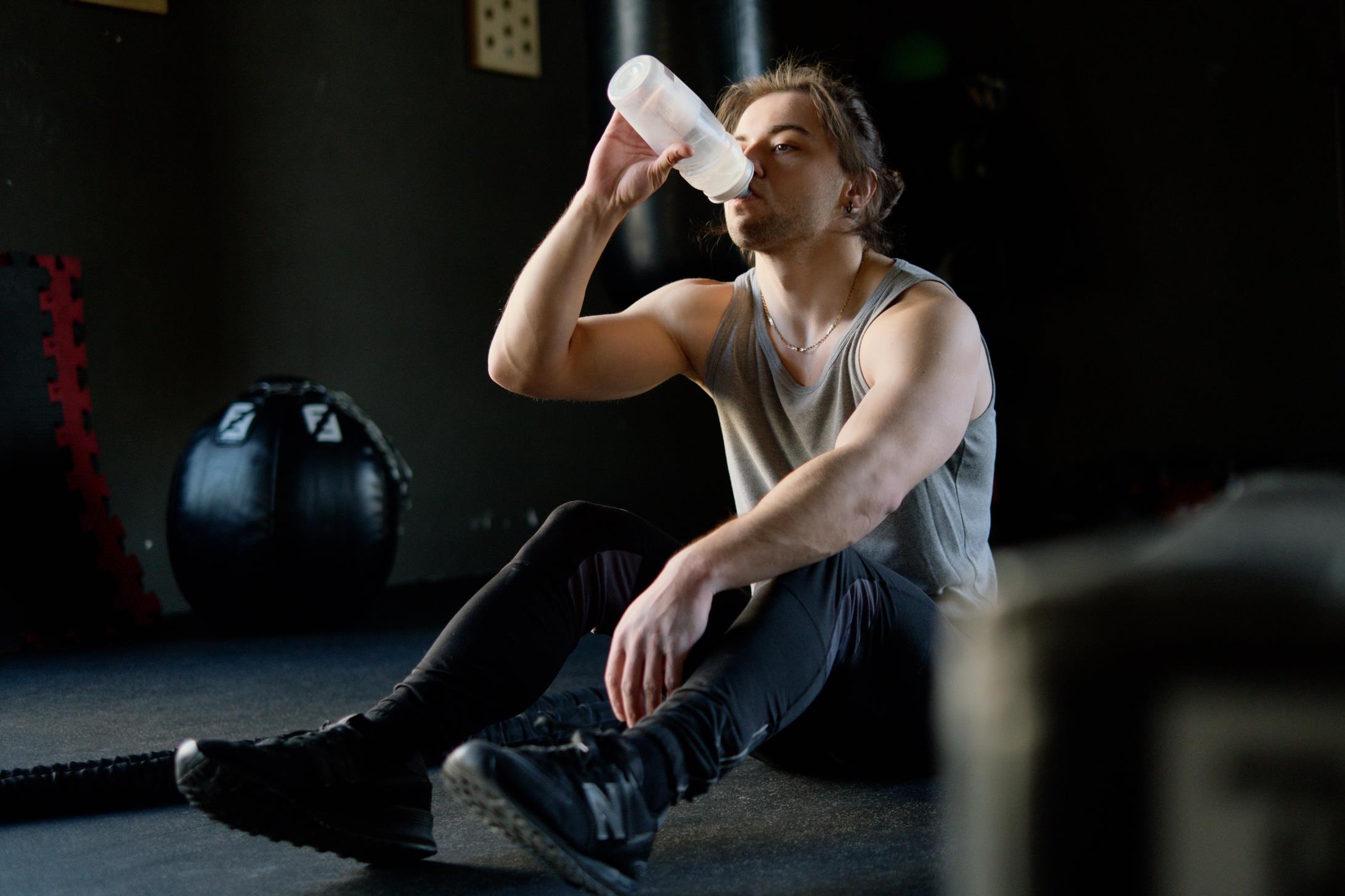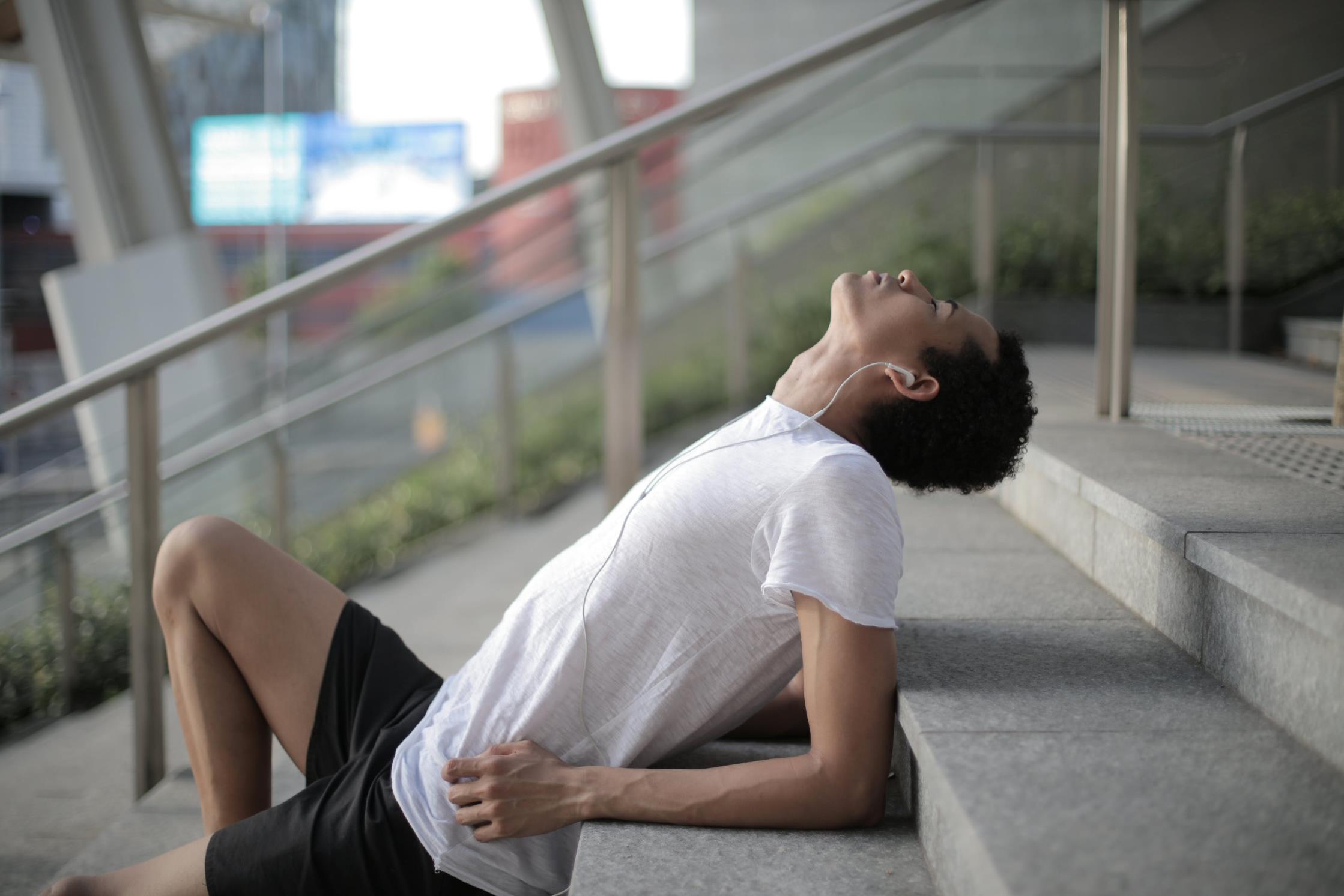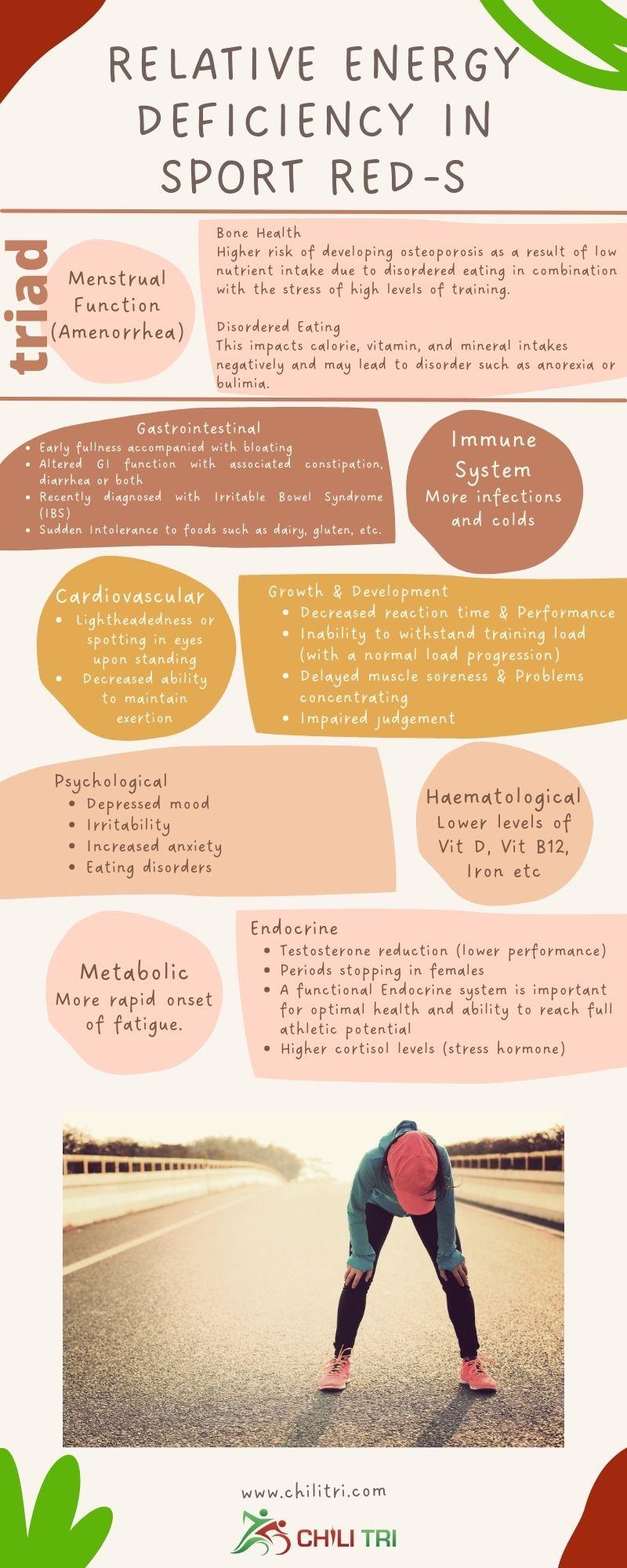You may have heard the terms the Female Triad and RED-S but what are they?
 Karen Parnell
March 03, 2022
Karen Parnell
March 03, 2022

You may have heard the terms the Female Triad and RED-S but what are they?
RED-S or Relative Energy Deficiency in Sport can affect both female and male athletes so it’s worth understanding what it is, how to spot it and what to do if you do see someone showing signs of decreased energy availability.
Female Athlete Triad
The Female Athlete Triad (Triad) was first defined in 1992 as an association between there elements: eating disorders, amenorrhea, and osteoporosis in female athletes, hence the name Triad. Over time research has taught that the cause was energy shortage. A balance between energy intake and expenditure is required to maintain homeostasis, health, and daily activities, in addition to sports.
Disordered Eating
Disordered eating for athletes is fuelled by the perception that thinner is better and the perceived need to lose weight for races. This impacts calorie, vitamin, and mineral intakes negatively and may lead to disorder such as anorexia or bulimia.
Amenorrhea
Amenorrhea is defined as a lack of a menstrual period for 3 months in a row which can be common amongst female endurance athletes. This could be caused by an eating disorder and reduce the athlete’s levels of oestrogen and in turn can impact bone strength.
Osteoporosis
Women with the female athlete triad have a higher risk of developing osteoporosis as a result of low nutrient intake due to disordered eating in combination with the stress of high levels of training. Osteoporosis occurs when bones lose mass, weaken and become brittle and those with this condition will get stress fractures more easily and frequently.
Over time the word “Triad” was dropped as it suggested a single condition and now, we know it is a spectrum or continuum of gradual changes in health spanning from health to sickness, with intermediate stages in between. As a result, it was renamed based on three factors: low energy availability (EA) (with or without disordered eating), menstruation dysfunction and poor bone mineral density.
Finally, in 2014, the International Olympic Committee (IOC) coined the term Relative Energy Deficiency in Sport (RED-S) to describe a disease that is more complete than the Female Athlete Triad.

Get your FREE Athlete Recipe Books
Female Athlete Triad and RED-S
The Triad and RED-S are both based on a low energy availability (EA) due to insufficient intake compared to the calories needed to exercise. It was thought to be associated with female athletes but was found to affect male athletes as well.
Over time, it became clear that the clinical phenomenon was not a simple triad of eating disorders, amenorrhea, and osteoporosis, but rather a syndrome resulting from relative EA that affected many aspects of physiological function, including basal metabolic rate (BMR), menstrual function, bones, immune function, protein synthesis, and both cardiovascular and psychological health.
This is how the term "relative energy deficiency in sport" (RED-S) was created, which incorporates a total of eleven health and performance consequences of insufficient calorie consumption.
The term RED-S refers to a complicated clinical syndrome characterized by physiological changes produced by a relative energy deficit resulting from higher energy expenditure than intake. This can impact short- and long-term health and performance. RED-S model includes endocrine-metabolic, haematological, growth and development, psychological, cardiovascular, gastrointestinal, and immunological health repercussions in addition to those associated with the Triad.

Get your FREE Athlete Recipe Books
What is Energy Availability (EA) and when does it become too low?
EA is the quantity of energy available in the body to carry out all functions other than sports practice.
This insufficient energy intake might be caused by a variety of factors. Eating disorders or abnormal nutritional practices, such as the use of laxatives, diuretics, prolonged fasting, or vomiting. However, during periods of injury or reduced exercise volume, there may be a sudden or excessive reduction in intake with the goal of not increasing fat percentage.
Low EA does not always have to be the result of eating disorders. This low energy intake could be due to lack of knowledge, a lack of appetite after rigorous training, a lack of time, or simply economic reasons.
The EA is determined using the following formula:
EA = (energy intake − daily physical activity energy expenditure) ÷ fat-free mass
Several studies have attempted to establish the lower EA threshold below which athletes begin to have issues. Although this level has not yet been thoroughly established, it is thought that a threshold of 30 kcal/kg FFM/day could represent the lower limit in women. If the athlete's energy availability falls below this level, there's a good chance he or she will experience endocrine, metabolic, and physiological changes.
Athletes who suffer from the effects of low EA over a long period of time may have nutritional deficiencies as well as a higher risk of infections and diseases.
Low EA's Physiological Consequences
When the EA is insufficient, the body enters "safe mode” which can be compared to a phone going in to “battery saving mode” when it’s battery is low and it shuts down non-essential processes to conserve it’s battery power.
The body in this energy save mode saves energy for critical systems like cell maintenance, thermoregulation, and movement while ignoring less important processes, at least in the short term, like reproduction or bone metabolism.

Photo by Ivan Samkov:
Get your FREE Athlete Recipe Books
RED-S Syndrome Impact
- Eating disorders e.g. anorexia and bulimia
- Amenorrhea (irregular periods)
- Osteoporosis (brittle bones)
- Reduced immunity
- Reduced protein synthesis (the process all cells use to make proteins, which are responsible for all cell structure and function)
- Impacted cardiovascular and psychological health
- Reduced short- and long-term performance
- Endocrine-metabolic (improper level of a hormone that alters the body’s metabolism and impacts its function) and haematological (problems with red blood cells, white blood cells, platelets, bone marrow, lymph nodes, and spleen) issues
- Growth and development issues plus decreased synthesis of growth hormone
- Gastrointestinal problems
It's important to remember that many athletes with eating disorders adopt extreme weight-loss measures like fasting, induced vomiting, or the overuse of diuretics and laxatives. Diuretics and some diet tablets may contain WADA-prohibited chemicals along with the health repercussions, such as dehydration, electrolyte imbalances, and/or gastrointestinal disorders caused by vomiting.

Photo by Andrea Piacquadio
Get your FREE Athlete Recipe Books
Physiological repercussions of low energy availability
A persistently low EA might have a negative impact on both performance and training adaption. Because RED-s is a relatively new illness there have not been many long-term studies, so we don’t know the true implications yet.
Some research has show that low EA can reduce the ability to use glucose as an energy source and glycogen stores are depleted resulting in increased fatigue, decreased power, resistance, and inferior neuromuscular function.
It's vital to remember that the best training adaptations happen when we're consistent with our training and not missing sessions. Because a low EA raises the danger of damage over time, as we have shown, it can lead missing planned sessions.
Data suggests that athletes at risk of RED-S lose up to 22 days of training per year due to illness, which is three times more than those who do not have RED-S.
What to Watch out For
Here is a checklist for female athletes who worry they may have developed or may be developing RED-S:
- Do you find yourself being very restrictive with your dietary intake even when others (like coaches and dieticians) say that you shouldn’t be?
- Have you had more than one stress fracture within the past 2 years?
- Have you not had a menstrual cycle in the past 90 days?
- Do you try to stay lean year-round even when not in the competitive season?
- Do you experience extreme fatigue and/or low self-esteem or depression?
If you answered “yes” to at least three of the preceding questions, there is a good chance you may have or be on the path to RED-S. If so you should work with a coach and/or psychologist to discuss your mental health and work closely with a dietician to establish healthy nutrition habits.
Diagnosis and treatment
So far, there appears to be no consensus on which tool or methodology is ideal for evaluating an athlete's health risk and determining whether or not they are fit for sports participation and competition.
The triad screening questionnaire and the LEAF-Q (Low Energy Availability in Females Questionnaire) are two diagnostic tools to consider.
The Low Energy Availability in Females Questionnaire (LEAF-Q) was validated to identify risk of the female athlete triad (triad) in female endurance athletes.
There are however also a variety of screening techniques available for eating disorders.
It's crucial to remember, though, that under fuelling and overtraining can cause low EA, and eating disorders aren't always the cause of the Triad/RED-S.
In terms of treatment, it's critical that this syndrome be handled by an interdisciplinary team of experts in this field such as nutritionists, trainers, psychologists, and sports doctors.
Conclusion: RED-S
The long-term consequences of RED-S include, but are not limited to, decreased bone density, cardiovascular issues, gastrointestinal disturbances and decreased immunity.
It's crucial to remember that under fuelling and overtraining can cause low energy availability (EA), and eating disorders aren't always the cause of the Triad/RED-S.
If you feel you may be moving towards this syndrome or can see another athlete sliding towards RED-S then seek the help and opinion of your coach and healthcare professionals.
Download your FREE athlete recipe books here
Karen Parnell is a Level 3 British Triathlon and IRONMAN Certified Coach, 8020 Endurance Certified Coach, WOWSA Level 3 open water swimming coach and NASM Personal Trainer and Sports Technology Writer.
Karen is currently studying for an MSc in Sports Performance Coaching at the University of Stirling.
Need a training plan? I have plans on TrainingPeaks and FinalSurge:
I also coach a very small number of athletes one to one for all triathlon and multi-sport distances, open water swimming events and running races, email me for details and availability. Karen.parnell@chilitri.com
Get your FREE Guide to Running Speed and Technique
Get your FREE Swim Workouts for Triathletes E-book
Get your FREE Open Water Swimming Sessions E-Book

RED-S (Relative Energy Deficiency in Sport) Infographic - want a PDF version? email me karen.parnell@chilitri.com
FAQ: RED-S (Relative Energy Deficiency in Sport) and the Female Triad
What is RED-S?
RED-S stands for Relative Energy Deficiency in Sport. It is a condition that occurs when athletes, both male and female, do not consume enough energy to support their training demands and overall health. It can have serious consequences for physical and psychological well-being.
What is the Female Triad?
The Female Triad is a term used to describe a combination of three interrelated conditions in female athletes: low energy availability, menstrual dysfunction, and decreased bone mineral density. These conditions often occur together and are associated with the inadequate intake of energy for the demands of exercise.
What are the causes of RED-S and the Female Triad?
The main cause of RED-S and the Female Triad is an energy imbalance, usually due to insufficient energy intake relative to energy expenditure. Factors that can contribute to this imbalance include strict dieting, excessive training volume, intense exercise, and societal pressures to achieve a certain body weight or shape.
What are the symptoms and health risks associated with RED-S and the Female Triad?
The symptoms and health risks associated with RED-S and the Female Triad may include:
- Decreased performance and endurance
- Fatigue and lack of energy
- Irregular or absent menstrual cycles
- Loss of bone density, leading to an increased risk of stress fractures and osteoporosis
- Decreased immune function
- Hormonal imbalances
- Impaired cardiovascular health
- Disordered eating patterns and body image issues
- Psychological disturbances such as anxiety and depression
How can RED-S and the Female Triad be prevented?
Prevention of RED-S and the Female Triad involves adopting a holistic approach to training and nutrition:
- Adequate energy intake: Ensure that energy intake matches the demands of training and overall health needs.
- Balanced nutrition: Consume a varied and balanced diet that includes all essential nutrients, vitamins, and minerals.
- Monitoring training load: Pay attention to training volume, intensity, and recovery to avoid excessive exercise and stress on the body.
- Seek support: Work with a registered dietitian, sports medicine professional, or healthcare provider with experience in sports nutrition and female athlete health.
- Promote body positivity: Encourage a healthy body image and discourage restrictive eating behaviours or excessive focus on weight or body shape.
How is RED-S and the Female Triad diagnosed?
Diagnosis of RED-S and the Female Triad typically involves a combination of medical history, physical examination, assessment of menstrual history, bone density testing, and blood hormone analysis. A healthcare professional with expertise in sports medicine and female athlete health can provide an accurate diagnosis.
How are RED-S and the Female Triad treated?
Treatment for RED-S and the Female Triad involves a multidisciplinary approach that may include:
Increasing energy intake to meet the body's needs
- Adjusting training load to achieve a healthy balance between exercise and recovery
- Restoring menstrual regularity through appropriate nutrition and training modifications
- Addressing any underlying psychological factors or disordered eating patterns
- Monitoring bone health and implementing strategies to promote bone density
- Ongoing support from healthcare professionals, including registered dietitians, physicians, and mental health specialists
Why is early detection and intervention important?
Early detection and intervention are crucial because prolonged energy deficiency and hormonal imbalances can have long-term negative effects on health, performance, and overall well-being. Timely intervention can help prevent further complications and promote a healthy recovery.
Can males develop RED-S or similar conditions?
Yes, while RED-S and the Female Triad are more commonly associated with female athletes, males can also develop similar conditions related to energy deficiency, hormonal imbalances, and bone health. It is important to recognize that all athletes, regardless of gender, need to maintain adequate energy balance to support their training and overall health.
If you suspect that you or someone you know may be experiencing symptoms related to RED-S or the Female Triad, it is important to seek medical advice and guidance from qualified healthcare professionals who specialize in sports medicine and female athlete health.

Photo by Ivan Samkov
References
- Areta, José L, Harry L Taylor, and Karsten Koehler. "Low Energy Availability: History, Definition and Evidence of Its Endocrine, Metabolic and Physiological Effects in Prospective Studies in Females and Males." European Journal of Applied Physiology (2020): 1-21.
- Ashley, Candi D, Marianne Leverone Kramer, and Phillip Bishop. "Estrogen and Substrate Metabolism." Sports Medicine 29, no. 4 (2000): 221-27.
- de Jonge, Xanne AK Janse. "Effects of the Menstrual Cycle on Exercise Performance." Sports medicine 33, no. 11 (2003): 833-51.
- FISSAC magazine, num 10 y num 3.
- Matzkin, Elizabeth, Emily J Curry, and Kaitlyn Whitlock. "Female Athlete Triad: Past, Present, and Future." JAAOS-Journal of the American Academy of Orthopaedic Surgeons 23, no. 7 (2015): 424-32.
- Mountjoy, Margo, Jorunn Sundgot-Borgen, Louise Burke, Susan Carter, Naama Constantini, Constance Lebrun, Nanna Meyer, et al. "The Ioc Consensus Statement: Beyond the Female Athlete Triad—Relative Energy Deficiency in Sport (Red-S)." British journal of sports medicine 48, no. 7 (2014): 491-97.
- Nazem, Taraneh Gharib, and Kathryn E Ackerman. "The Female Athlete Triad." Sports health 4, no. 4 (2012): 302-11.
- Oosthuyse, Tanja, and Andrew N Bosch. "The Effect of the Menstrual Cycle on Exercise Metabolism." Sports medicine 40, no. 3 (2010): 207-27.
- Rocha-Rodrigues, Sílvia, Mónica Sousa, Patrícia Lourenço Reis, César Leão, Beatriz Cardoso-Marinho, Marta Massada, and José Afonso. "Bidirectional Interactions between the Menstrual Cycle, Exercise Training, and Macronutrient Intake in Women: A Review." Nutrients 13, no. 2 (2021): 438.
- Thorpe, Holly, Marianne Clark, and Julie Brice. "Sportswomen as 'Biocultural Creatures': Understanding Embodied Health Experiences across Sporting Cultures." BioSocieties 16, no. 1 (2021): 1-21.
- Warrick, Alexandra, Marcia Faustin, and Brandee Waite. "Comparison of Female Athlete Triad (Triad) and Relative Energy Deficiency in Syndrome (Red-S): A Review of Low Energy Availability, Multidisciplinary Awareness, Screening Tools and Education." Current Physical Medicine and Rehabilitation Reports (2020): 1-12.
#traithlontrainingplans #swimmingtrainingplans #runningtrainingplans #triathlon #swimming #cycling #running #reds #femaletriad
